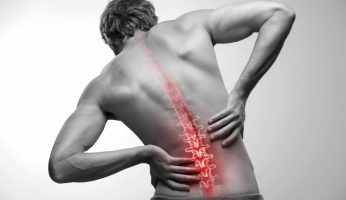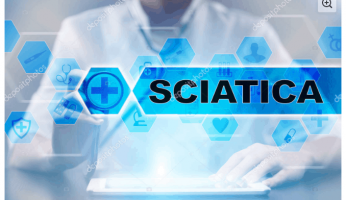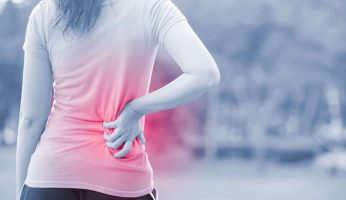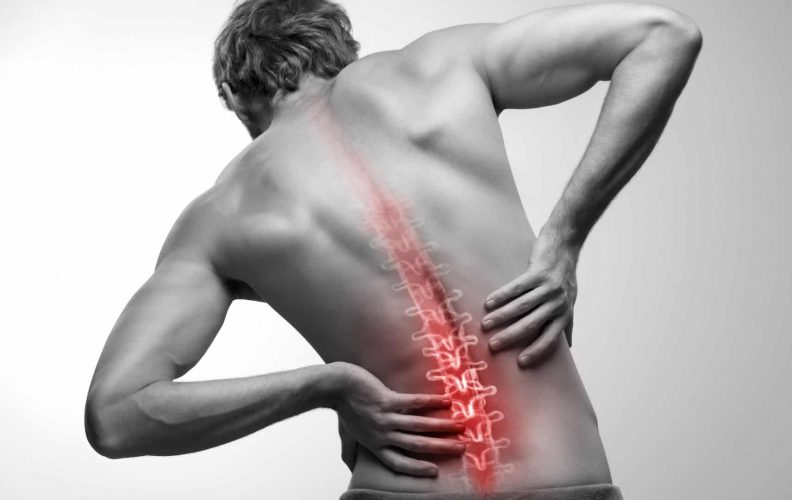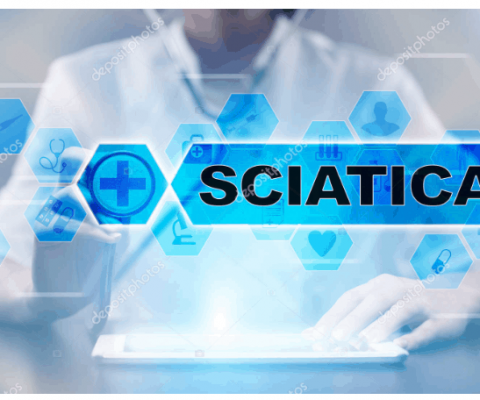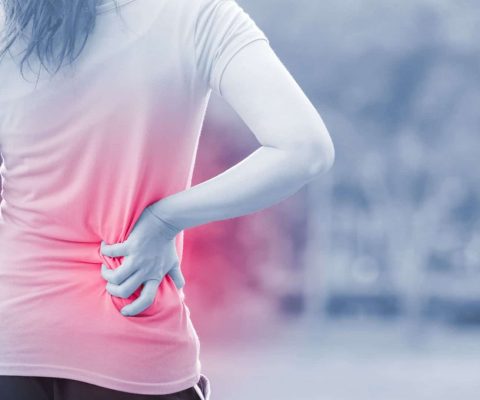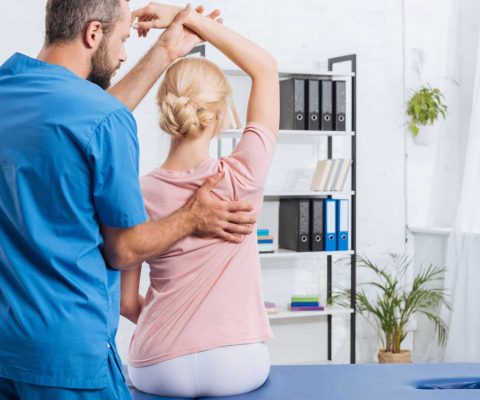Does Traction Help Lower Back Pain?
Disclosure: We use affiliate links and may receive a small commission on purchases.
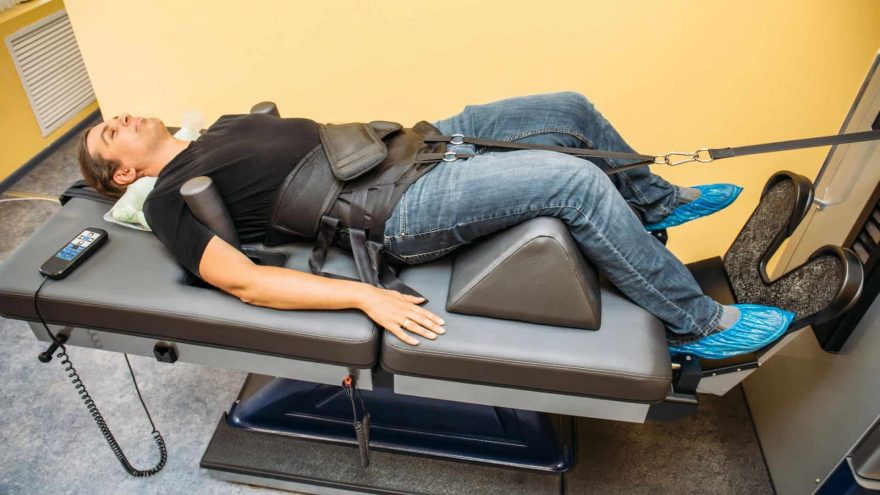 Does Traction Help Lower Back Pain?
thefitbay.com
Does Traction Help Lower Back Pain?
thefitbay.com
Those struggling with lower back pain know how disruptive this condition can be to their daily life. In the quest for lasting relief, many turn to spinal decompression therapy – a type of traction that has long been used as a method to treat lower back pain.
Traction involves the use of various types of forces to achieve spinal decompression. This decompression of structures in the spine often helps those with back pain find relief from their symptoms. This article will review all of the most important information on traction, including: what traction is, how traction works, benefits and risks of traction compared to other treatments, and how traction may be utilized as an at-home treatment method for back pain.
What is Traction?
As mentioned above, traction is the use of force to achieve spinal decompression. In the case of mechanical traction, the person is hooked up to a motorized unit via a series of harnesses. The amount of pulling force is set at a certain level to provide the stretch. Not all traction is mechanical, though. People can achieve traction on their own using certain exercises or inversion tables to allow gravity to provide the force.
In practice, traction has been used by doctors and physical therapists in an attempt to treat:
- Lower back pain, neck pain and sciatica
- Bulging or herniated disks
- Degenerative disk disease
- Worn spinal joints
- Injured or diseased spinal nerve roots
As a non-surgical alternative that aims to relieve lower back pain in a natural, medication-free manner, traction-induced spinal decompression sounds almost too good to be true. So let’s have a deeper look into the ways in which traction works and the supporting studies providing us with benefits of its effects.
How Does Traction Work?
Traction, whether motorized or gravity-assisted, works by gently stretching the spine. In the process, the pressure is taken off the spinal disks, the gel-like cushions between each bone in a spinal column. As a result, bulging or herniated disks may withdraw and the movement of oxygen, water and other nutrient-rich fluids is improved, helping the disks heal.
A quick glimpse into the anatomy can help your understanding of how traction can help lower back pain. The following are spinal structures that may cause lower back pain when they are affected:
Intervertebral Discs
Intervertebral discs are located between each vertebra of the spine. Their purpose is to provide shock absorption and provide a smooth surface for each vertebra to articulate with the ones above and below it. Discs have a tough outer edge and a gel-like fluid in the middle which gives discs the pliability to perform their functions.
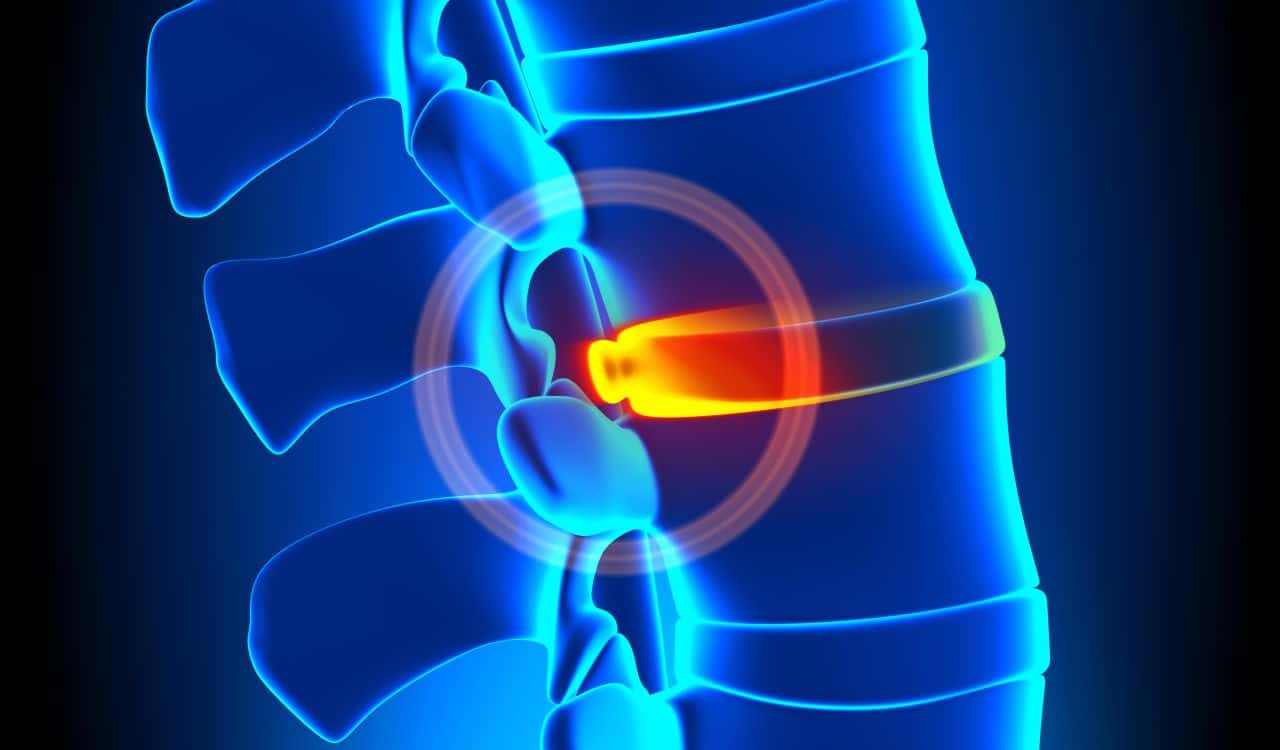
In some people, the gel-like fluid can push too far into the outer layer, often called a bulging disc. In more severe cases, the gel can push through the outer layer and press into the spinal canal or onto spinal nerve roots. This is often referred to as a herniated disc. Either one of these conditions can cause back pain that may even travel down into the lower extremity if the nerve root is affected.
In other cases, normal or abnormal age-related changes may occur in the discs. This is often referred to as degenerative disc disease. This usually involves a general shrinking of the discs leading to decreased space between vertebrae, possibly causing pressure on other sensitive structures.
Facet Joints
Facet joints are the small joints on either side of each vertebra that allow for articulation and smooth movement for each segment of the spine. These joints are lined with cartilage that improves their ability to move on each other. They are also highly innervated with nerves and can be very sensitive when not functioning properly.
Facet joints can be irritated through trauma, prolonged poor positioning, or other stimuli. This may make certain spinal motions painful due to decreased space of movement or poor articulation of the joints.
As with discs and other joints in the body, age-related degenerative changes may occur at these joints, decreasing the articular space between them. This decreased space may cause pain to occur.
Spinal Nerves
There is a space between the vertebrae at each spinal level on both sides called the intervertebral foramen. These spaces are where spinal nerve roots exit the spinal column. These nerve roots are responsible for both sensory and motor innervation of certain areas of the body depending on the level at which they exit.
The spaces between the vertebrae may shrink due to decreased disc height, decreased facet joint space or function, or muscular tightness. When the intervertebral foramen shrink, it allows for decreased space for the spinal nerve roots to move, which can be very painful. This may also cause pain, numbness, or weakness into the associated peripheral pathway of that particular nerve root.
Spinal Muscles
When an injury occurs, sometimes the nervous system will send signals to muscles to tighten in order to protect the area from additional injury. Although this response can help with tissue healing, the increased tone of the muscles can cause pressure on sensitive areas of the spine. The muscle spasms themselves may be painful, or the pressure they cause on nerves or joints may cause pain as well.
Traction works by using forces to increase the space between vertebrae. It may act to improve disc height, joint space, intervertebral foramen space, or help relax muscle tissue. The decompression of these tissues may lead to an improvement in pain or other symptoms associated with lower back conditions.
Blunting the pain response will typically relax the body an allow for better active movement. This improved active movement will then reinforce better overall function and further decrease pain and symptoms.
Does Traction Work?
The short answer is yes – traction can be an effective treatment for those with back pain. If you speak with anyone who has had traction as a treatment for their back pain, they will more than likely tell you that it was helpful and it felt good. Anecdotal evidence is always nice, but is there scientific evidence supporting the use of traction?
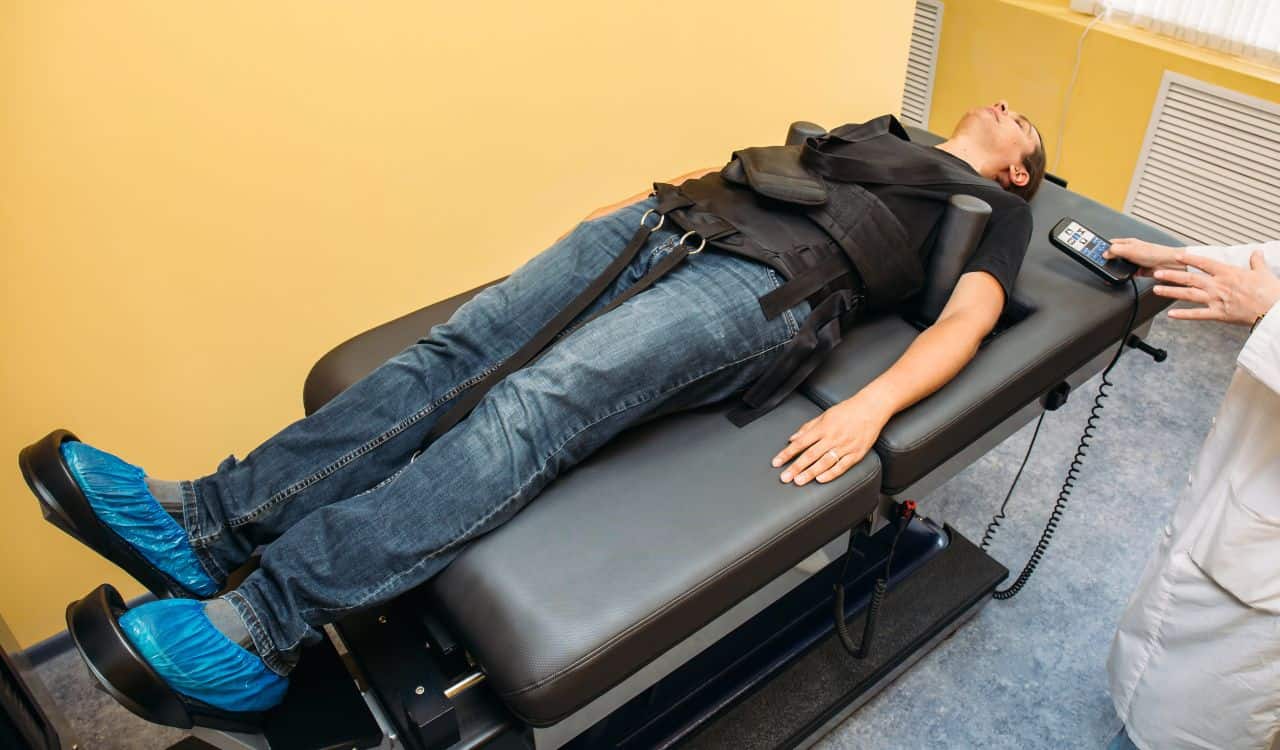
There are many evidence based research studies that back the use of traction and the theories on how it works. It has been shown that the use of traction can increase intervertebral disc height. (1, 2) This is significant, as increasing the intervertebral disc height may lead to decreased pressure on sensitive tissues in the lumbar spine and lead to decreased symptoms.
Other studies conducted have shown that subjects with low back pain who receive traction subjectively report improvements in their symptoms, as well as scoring better on objective functional tests and fear-avoidance behavior questionnaires. (3, 4, 5, 6)
With each new study into the effectiveness of traction being conducted, we gain a better understanding of how this method helps a variety of spinal conditions.
Benefits and Risks of Traction
Now that you understand how traction works and that evidence supports its effectiveness, let’s take a look at the benefits of traction over other modes of treatment and some of the risks involved.
Traction is a safe treatment modality for those with back pain. It involves only the use of controlled external forces to apply a stretch to the spine. The possible side effects are nearly non-existent, particularly when you compare them to other treatments like medication, acupuncture, manipulation, and surgery. Although those treatment methods have their places, traction is certain the safest among these.
Possible side effects of traction for those safe to use it include muscular soreness or additional muscle spasms, although this is rare and always temporary. There are no long term risks for spinal traction known at this time.
In addition to its ability to provide relative low-risk treatment, spinal traction is convenient. It may be performed at home or during travel through different methods.
How to Achieve Traction at Home
As mentioned previously, traction is easy to perform as an at-home method of treatment for back pain. One of the most convenient home traction methods are inversion tables.
Inversion tables are devices that suspend the user at a predetermined angle in order to use gravity as the driving force for spinal decompression. Many people who use inversion tables love them because of the immediate symptom relief they can provide.
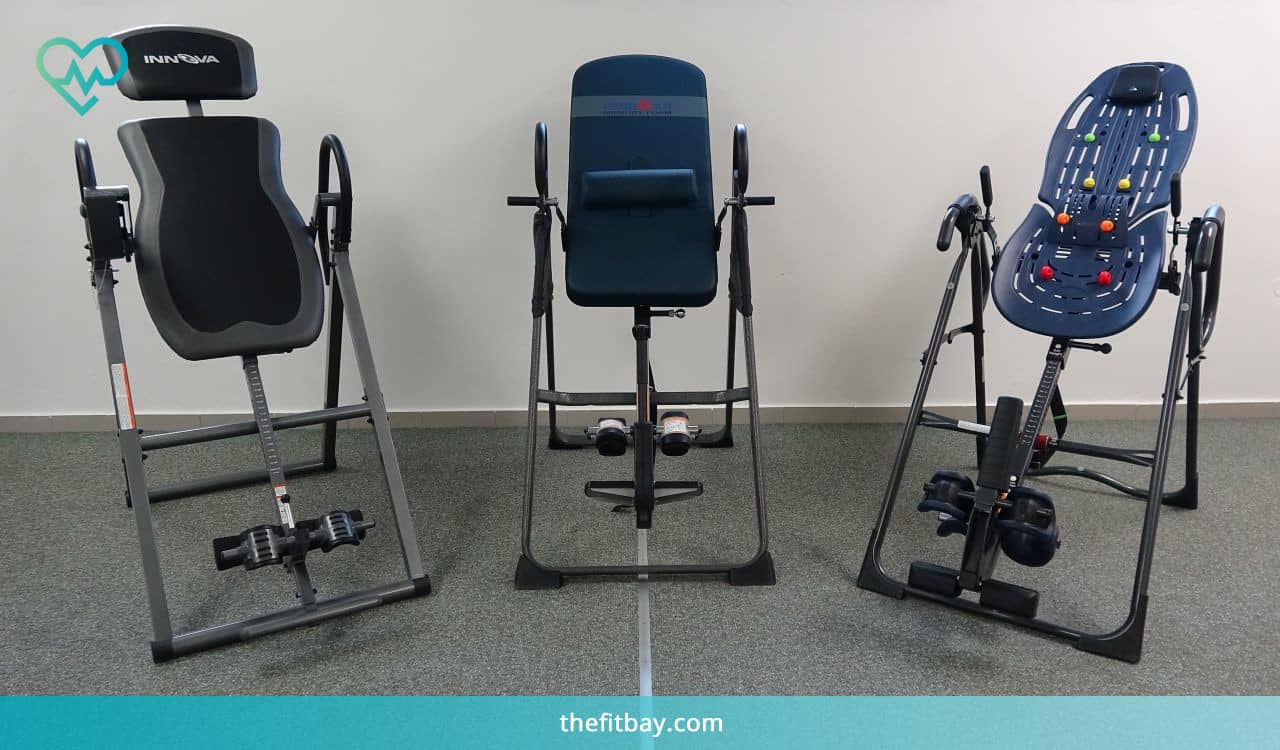
In addition to their effectiveness, inversion tables are generally easy to set up and safe to use. Additionally, the user may adjust the inversion table to his or her needs and perform specific exercises to target a variety of conditions.
Traction can also be achieved through other methods. If you have a friend or family member with you, they can gently pull on your leg to induce a traction effect through your lumbar spine. You may have them gradually increase their force as you can tolerate, just be sure that you do not utilize this method if you have hip, knee, or ankle problems.
If you do not have an inversion table or another person nearby, you can still benefit from traction. You can simply find a doorway, pull-up bar, or another sturdy piece of suspended material, and hang from it. It is recommended that you start with your feet touching the floor so that you can control the pull of gravity before gently beginning to lift more of your weight from the floor until you are completely suspended. The drawback of this method is that it requires much more work on your end, and some people have trouble relaxing enough to feel the benefits from the traction forces.
Relieving the Pressure: Traction in a Nutshell
Spinal decompression is the unloading of sensitive tissues at and around the spine that may cause lower back pain. Traction is a type of spinal decompression that is supported by research as an effective way to reduce symptoms associated with back pain.
Traction can be achieved with a variety of methods, but inversion tables are the most effective and convenient way to achieve at home back pain relief through traction.
If you are suffering from back pain, start considering traction as a way to help relieve your symptoms and get back to living your life to the fullest!

